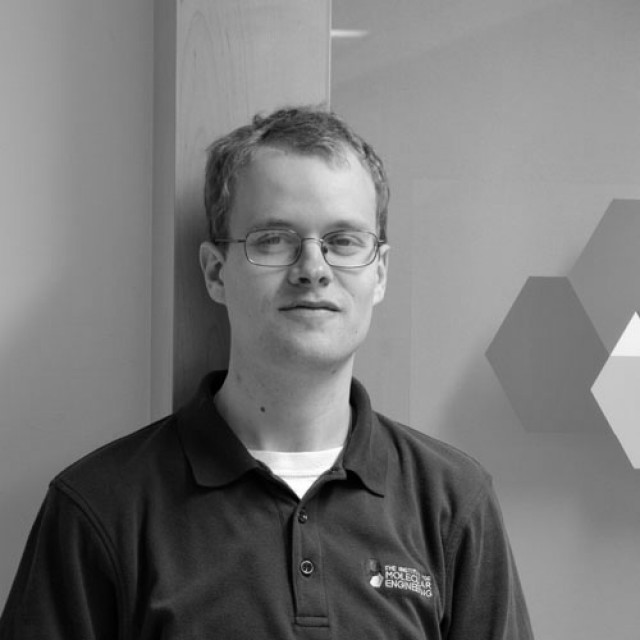Born in Boston, Massachusetts, Seidel began his collegiate career at Central Arizona College in Coolidge, Arizona. After receiving his AS in engineering science, he transferred to the University of Texas at Austin, where he obtained his BS in chemical engineering with high honors in 2010. While at UT-Austin, Seidel worked in the research lab of Dr. Nicholas Peppas, investigating diffusion behavior (Fickian vs. Case II transport) in various biomaterials. He joined the research group of Professor Paul Nealey in the summer of 2010 and entered the graduate program at the University of Wisconsin-Madison that fall. He defended his master’s on the use of layer-by-layer (LbL) films to achieve surface energy tunability in January of 2013, then joined the new Pritzker School of Molecular Engineering at the University of Chicago as a PhD candidate. In June 2013, Seidel moved to work at IMEC in Leuven, Belgium.
Block copolymer self-assembly is directed by controlling the interfacial energy between the BCP film and the supporting substrate. Control of this interfacial energy is typically achieved by deposition of a tunable-composition layer, such as a copolymer brush, on top of a structural substrate, such as a silicon wafer. In order to prevent removal of the deposited layer during further processing steps, the brush is often chemically grafted to the underlying substrate using some sort of complimentary chemistry, such as –OH functionalized brushes dehydrating on a native oxide. The drawback of this system is therefore that the substrate must have inherent chemical functionality that can be exploited for brush grafting. Practical considerations also end up requiring that the substrate be planar for even brush deposition.
As production moves more heavily towards roll-to-roll (R2R) processing, tunability of the surface energy of the film is still critical for any DSA process. However, materials with appropriate structural or mechanical properties may not have innate chemical functionality; some other way of depositing a uniform layer of controllable surface energy must be found. Layer-by-layer (LbL) deposited films—already used extensively in biological applications for their coating ability—provide an excellent vector for accomplishing this goal. LbL films conformally and uniformly wet any geometry or chemistry and can be selected to have any chemical functionality. Furthermore, selection of ‘click’-type chemical functionality in the LbL film’s top layer allows solution deposition of a complementary and chemically tunable brush without thermal curing. Seidel’s work focuses on understanding the grafting kinetics of these brushes as well as the wetting behavior of LbL-coated 3-D structures. Presently, he is working in collaboration with scientists at IMEC towards expansion of BCP DSA capability.
Three-Tone Chemical Patterns for Block Copolymer Directed Self Assembly
Williamson, LD; Seidel, RN; Chen, XX; Suh, HS; Delgadillo, PR; Gronheid, R; Nealey, PF. Three-Tone Chemical Patterns for Block Copolymer Directed Self Assembly. ACS Applied Materials & Interfaces. 2016. Vol. 8, Pg. 2704-2712.
